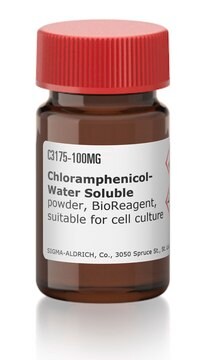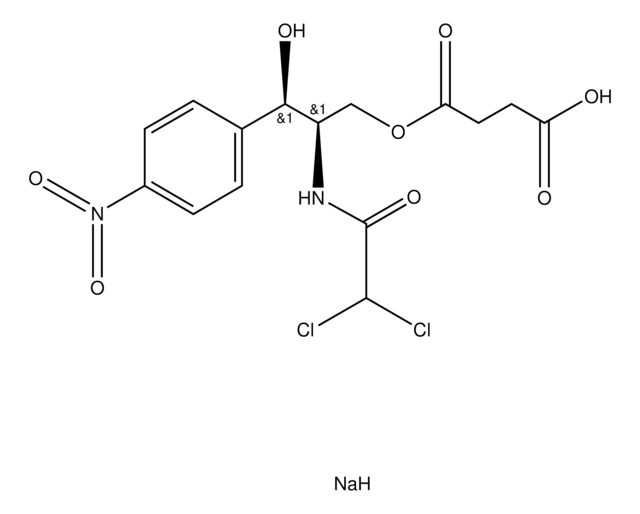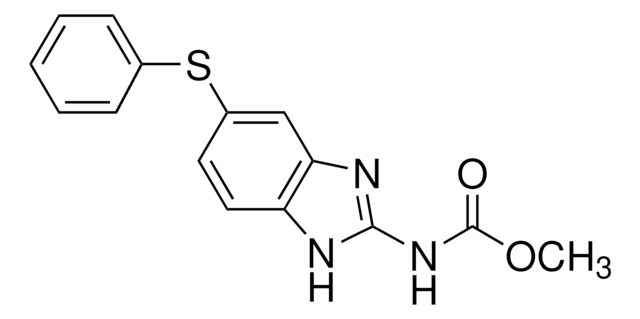Wichtige Dokumente
C3787
Chloramphenicol-Succinat Dinatriumsalz
≥80% (HPLC)
Synonym(e):
Chloramphenicol-α-succinat
About This Item
Empfohlene Produkte
Qualitätsniveau
Assay
≥80% (HPLC)
Form
solid
Löslichkeit
H2O: 50 mg/mL
Wirkungsspektrum von Antibiotika
Gram-negative bacteria
Gram-positive bacteria
Wirkungsweise
protein synthesis | interferes
SMILES String
[Na].O[C@@H]([C@@H](COC(=O)CCC(O)=O)NC(=O)C(Cl)Cl)c1ccc(cc1)N(=O)=O
InChI
1S/C15H16Cl2N2O8.Na.H/c16-14(17)15(24)18-10(7-27-12(22)6-5-11(20)21)13(23)8-1-3-9(4-2-8)19(25)26;;/h1-4,10,13-14,23H,5-7H2,(H,18,24)(H,20,21);;/t10-,13-;;/m1../s1
InChIKey
RJOAHMNSYANTPN-OWVUFADGSA-N
Suchen Sie nach ähnlichen Produkten? Aufrufen Leitfaden zum Produktvergleich
Verwandte Kategorien
Allgemeine Beschreibung
Anwendung
Biochem./physiol. Wirkung
Mode of Resistance: Use of chloramphenicol acetyltransferase will acetylate the product and inactivate it.
Antimicrobial Spectrum: This is a broad spectrum antibiotic against gram-positive and gram-negative bacteria, and is used mainly for ophthalmic and veterinary purposes.
Vorsicht
Angaben zur Herstellung
Sonstige Hinweise
Signalwort
Warning
H-Sätze
Gefahreneinstufungen
Acute Tox. 4 Oral - Carc. 2
Lagerklassenschlüssel
11 - Combustible Solids
WGK
WGK 3
Persönliche Schutzausrüstung
Eyeshields, Gloves, type P3 (EN 143) respirator cartridges
Hier finden Sie alle aktuellen Versionen:
Besitzen Sie dieses Produkt bereits?
In der Dokumentenbibliothek finden Sie die Dokumentation zu den Produkten, die Sie kürzlich erworben haben.
Kunden haben sich ebenfalls angesehen
Unser Team von Wissenschaftlern verfügt über Erfahrung in allen Forschungsbereichen einschließlich Life Science, Materialwissenschaften, chemischer Synthese, Chromatographie, Analytik und vielen mehr..
Setzen Sie sich mit dem technischen Dienst in Verbindung.







